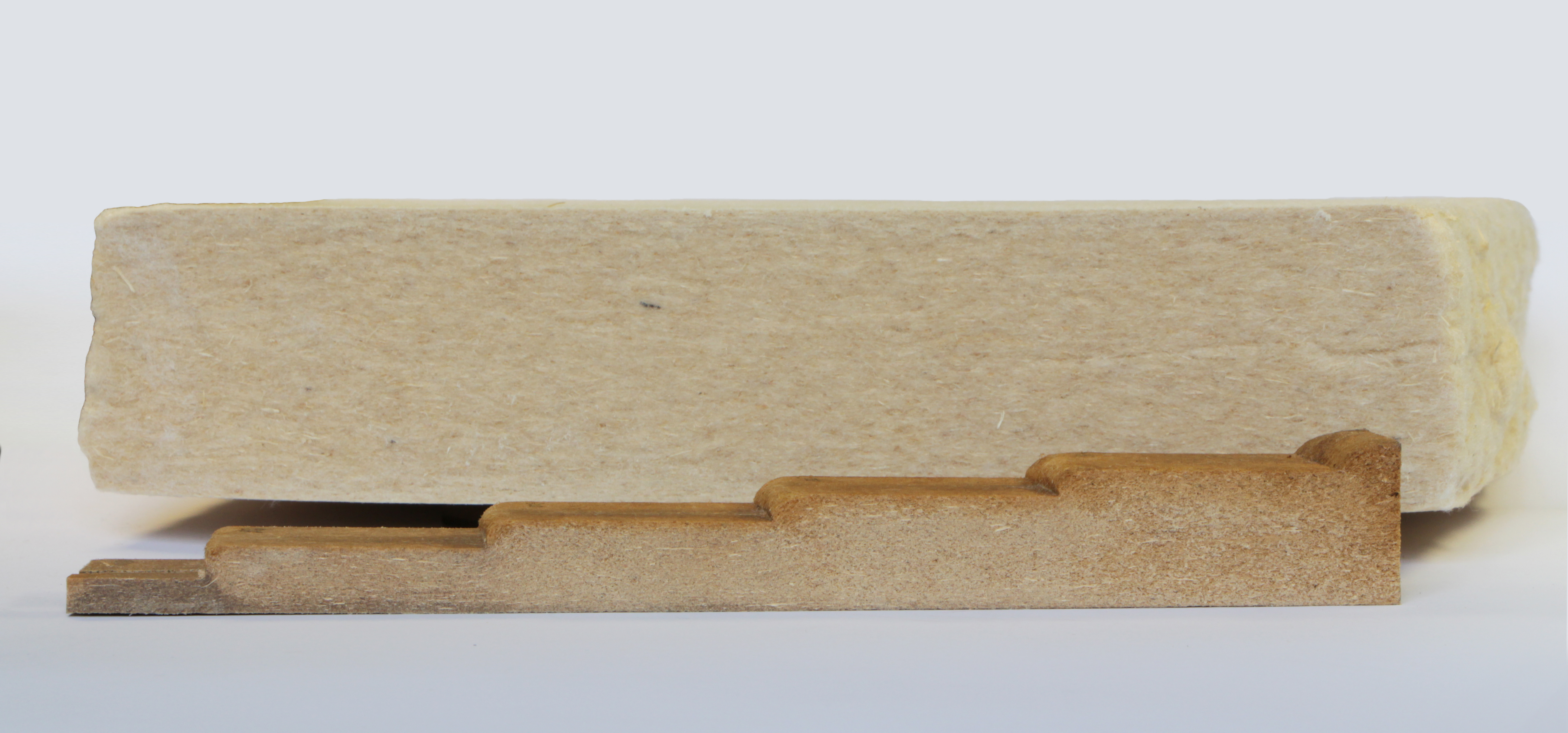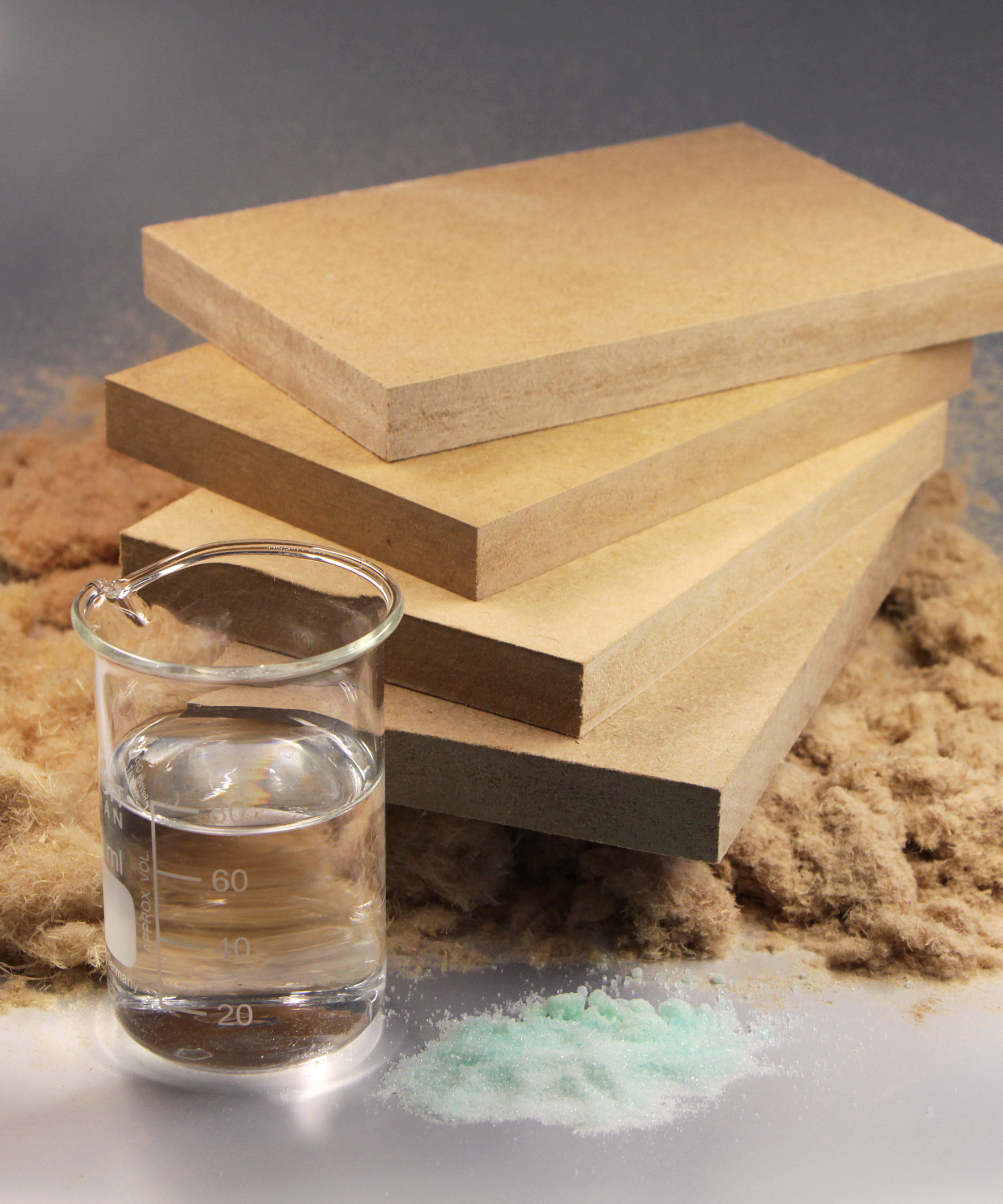The reduction of health-endangering formaldehyde emissions forms a research focus in several departments at the Fraunhofer WKI. The target is the development of formaldehyde-free adhesives on the basis of renewable resources and other source materials. In the department "Technology for Wood and Natural Fiber-Based Materials”, we test new approaches to the production of thermoplastic and thermoset-curing binders on a semi-industrial scale, in particular for veneer and two-stage fiber materials. The key to success is the temperature control, which is adjusted to suit the material components and procedures. Furthermore, we continue to pursue the reduction of formaldehyde release through the development of formaldehyde-free amino resins and the use of auto-adhesive bonds.
Adhesives and wood chemistry
Research focus
Durable dimensional stability is of vital importance for the application and marketing possibilities for wood-based materials, in particular for molded parts. In this context, we research the combination of thermosets with binder and matrix components which are made, to the largest possible extent, from renewable raw materials and/or biodegradable thermoplastics such as PLA or compounds with a PLA proportion.
The thermoplastics are - primarily in the form of fibers and films - combined with wood fibers or veneers. The thermosets, which cure at other temperature levels, are, in particular, acrylates as well as 1C PUR systems formulated at the Fraunhofer WKI. The latter also enable curing at room temperature but are, however, intended - with an adapted formulation - for the binding of wood components at higher temperatures. The combination of veneer, thermoplastic films and latently-effective, at higher temperature-curing thermosets can be cured through both contact heating and high-frequency alternating fields.
In addition to these entirely new approaches for the production of molded parts, we continue to pursue our extensive research into the formaldehyde-free bonding of traditional wood-based materials such as particle board or MDF. Due to the increasing tightening of legal regulations, it was - and still is - absolutely necessary for the industry to create a solution. For traditional wood-based materials, amino resins on the basis of urea or melamine as well as formaldehyde are predominantly being used at present. Both during manufacture and in use, formaldehyde can be released from the wood-based materials. Through the variations regulation for the 6th ATP (Adaptation to Technical Progress) of the CLP Regulation, formaldehyde has been classified under hazard classes Carcinogenicity/Category 1B and Mutagenicity/Category 2. This reclassification has been effective since 1st January, 2016. In the adhesives and wood-based materials industry, the reclassification affects occupational safety, limits for carcinogenic substances with regard to TA Luft (German pollution control regulation, 2002) and AgBB (Committee for Health-related Evaluation of Building Products, 2012) as well as the recycling of wood-based materials containing formaldehyde (Altholzverordnung – waste wood ordinance). The formaldehyde release from emissions from wood-based materials and products produced therefrom is currently limited in Germany to a steady-state concentration of a maximum of 1.2 mg/m³ (= 0.1 ppm, emission class "E1", test chamber procedure in accordance with DIN EN 717-1). The further reduction in the formaldehyde emission from wood-based materials with formaldehyde-based adhesives to a level which is as close as possible to that of wood or wood particles has been taking place gradually for many years.
In our investigations into the reduction of the formaldehyde release from amino resin-bonded wood-based materials through the development of formaldehyde-free amino resins, we cooperate frequently with the department "Synthesis and Polymer Technology" at the Fraunhofer Institute for Applied Polymer Research IAP.
 Fraunhofer Institute for Wood Research
Fraunhofer Institute for Wood Research 
